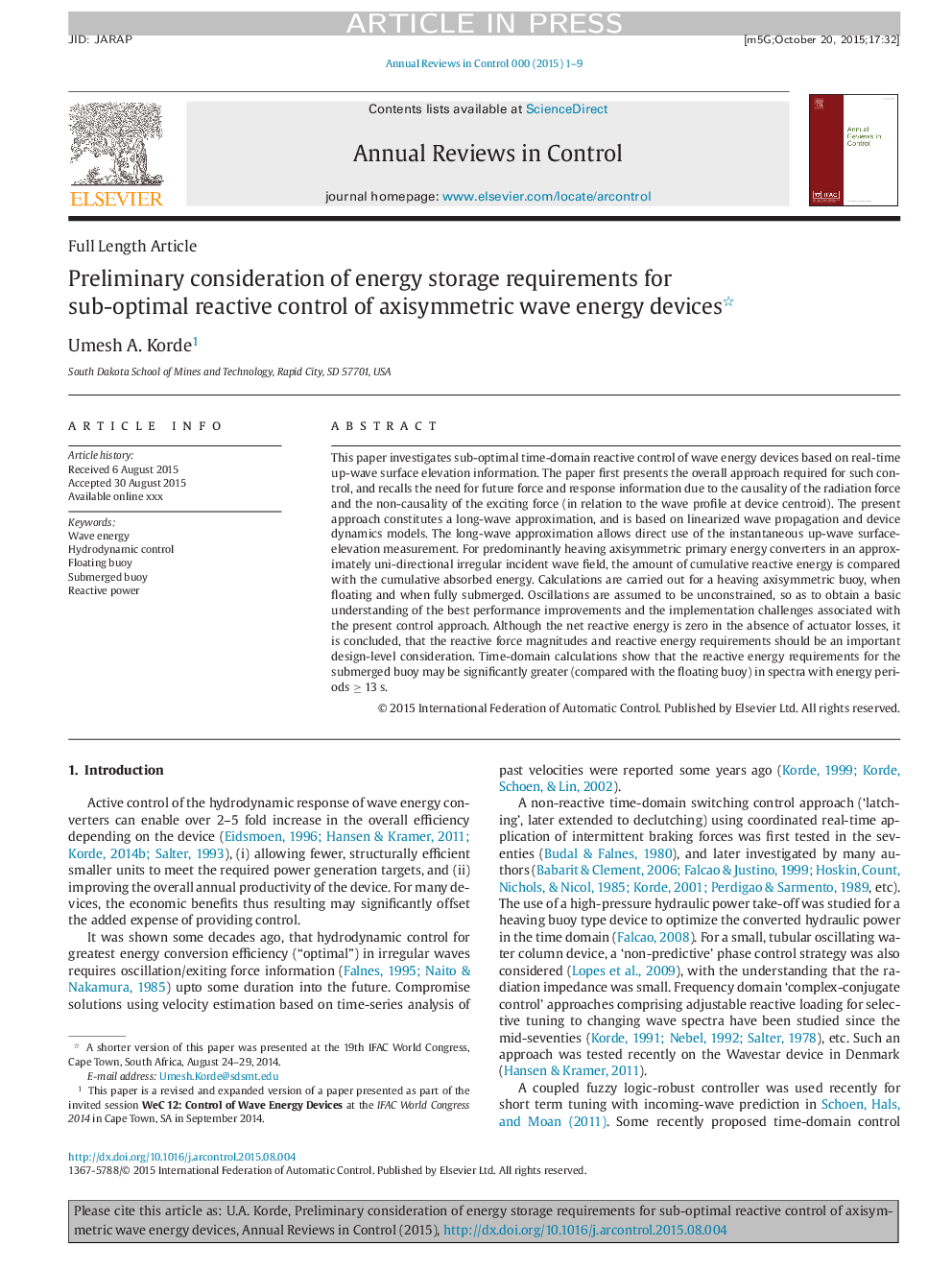| Article ID | Journal | Published Year | Pages | File Type |
|---|---|---|---|---|
| 7108000 | Annual Reviews in Control | 2015 | 9 Pages |
Abstract
This paper investigates sub-optimal time-domain reactive control of wave energy devices based on real-time up-wave surface elevation information. The paper first presents the overall approach required for such control, and recalls the need for future force and response information due to the causality of the radiation force and the non-causality of the exciting force (in relation to the wave profile at device centroid). The present approach constitutes a long-wave approximation, and is based on linearized wave propagation and device dynamics models. The long-wave approximation allows direct use of the instantaneous up-wave surface-elevation measurement. For predominantly heaving axisymmetric primary energy converters in an approximately uni-directional irregular incident wave field, the amount of cumulative reactive energy is compared with the cumulative absorbed energy. Calculations are carried out for a heaving axisymmetric buoy, when floating and when fully submerged. Oscillations are assumed to be unconstrained, so as to obtain a basic understanding of the best performance improvements and the implementation challenges associated with the present control approach. Although the net reactive energy is zero in the absence of actuator losses, it is concluded, that the reactive force magnitudes and reactive energy requirements should be an important design-level consideration. Time-domain calculations show that the reactive energy requirements for the submerged buoy may be significantly greater (compared with the floating buoy) in spectra with energy periods ⥠13 s.
Related Topics
Physical Sciences and Engineering
Engineering
Control and Systems Engineering
Authors
Umesh A. Korde,
